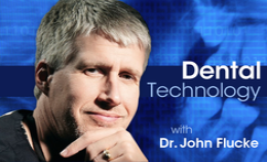DPR tech editor gives thumbs up to the DEXIS CariVu transilluminator
For years now, dentistry has been diagnosing, for the most part, interproximal decay in pretty much the exact same way. Since the introduction of the concept of the bitewing radiograph, the process of locating and diagnosing decay between the teeth has only gone through minor changes.
For years now, dentistry has been diagnosing, for the most part, interproximal decay in pretty much the exact same way. Since the introduction of the concept of the bitewing radiograph, the process of locating and diagnosing decay between the teeth has only gone through minor changes.
The good news is that, with better collimation and digital sensors, we have managed to increase our diagnostic ability while greatly decreasing the amount of radiation that is needed to create the images.
This, of course, means that we are seeing more and diagnosing more accurately while exposing patients to less and less radiation.
However, most of us will admit that we still routinely come across areas on a radiograph that are questionable.
Now dentistry prides itself on conservative diagnosis and treatment, so we are faced with a clinical Catch-22.
Do we open a possibly non-carious area to make absolutely sure, or do we follow these areas hoping that the patient keeps his or her re-care appointments so that we can check these areas again in a year and see if the area appears to have changed?
Neither one of these choices is an easy one to make and, in the eyes of most practitioners, both have a significant downside.
A breakthrough
However, how amazing would it be to be able to transilluminate with a device that allows us to save what we see as a digital image so that we can review it at a later date? Then let’s take this concept one step further.
How cool would it be to be able to not only save that image but to compare it directly to the bitewing you just took earlier in that exam?
Well, this is no longer pie-in-the-sky or a dream. The above concept is now a reality thanks to the hard work of the people at DEXIS.
Since early January, I have been using and testing a new device called CariVu.
The device is a transilluminator with a built-in infrared camera. It shines near-infrared light through the teeth from both the buccal and lingual aspects simultaneously and puts the live image on the operatory computer screen where it can be viewed live by doctor and patient.
The image can then be stored in DEXIS imaging software along with intraoral photos and digital radiographs taken with a DEXIS sensor.
CariVu benefits
One of the best things about using the CariVu is the way its image capture capabilities were built into the software.
Images are assigned to a tooth and, when captured, the most recent radiograph of that tooth comes up in the software next to the CariVu image. This allows for immediate comparison between the two types of images. Because the CariVu provides such crisp and clear clinical images, it is very easy to see interproximal decay as darkened areas in the transilluminated pictures.
The CariVu captures black and white images so they appear very much like a radiograph. Decay shows up as a darkened area in the lighter surrounding tooth structure.
The device can be used to view the interproximal surfaces anywhere in the mouth as well as the occlusal surfaces. This allows the dental professional to finally be able to see under the enamel and find things such as decay around existing restorations, cracks, smooth surface caries, and interproximal caries with one device that does not use ionizing radiation.
Scanning the mouth with the CariVu device is quick and easy. It connects to the operatory computer via USB and is easily recognized by the DEXIS software.
While scanning and saving every tooth is an option, many offices will choose to scan but only save those images with potential problems.
Since CariVu uses infrared light, it will not replace radiographs for routine diagnosis. However, since using the device, I have certainly seen things that I have not seen on radiographs.
DEXIS has done a remarkable job of designing this device for ease-of-use clinically. They have also done a great job integrating this into their imaging software.
If you are one of those doctors, like me, who frequently struggles with doing the right thing when it comes to questionable areas on a radiograph, the CariVu may be just what you’ve been looking for.
Product Bites – January 19, 2024
January 19th 2024Product Bites makes sure you don't miss the next innovation for your practice. This week's Product Bites podcast features new launches from Adravision, Formlabs, Owandy Radiology, Henry Schein Orthodontics, Dental Creations, and Dental Blue Box. [5 Minutes]
Product Bites – January 12, 2024
January 12th 2024The weekly new products podcast from Dental Products Report is back. With a quick look at all of the newest dental product launches, Product Bites makes sure you don't miss the next innovation for your practice. This week's Product Bites podcast features new launches from Videa Health and DentalXChange.
